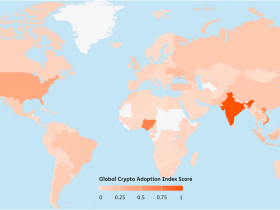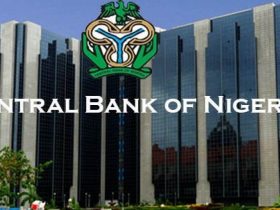Defi stands for “decentralized finance”. It refers to financial applications and services that are built on top of distributed ledger technologies like blockchain networks.
DeFi refers to an open, permissionless and decentralized financial service ecosystem built for the internet era utilizing blockchain technology and cryptocurrencies. The goal is to transform traditional financial products into trust-less and transparent protocols enabling anyone to access.
Key Characteristics:
– Trustless – No need to trust a central authority or intermediary as everything is verified cryptographically through code.
– Transparent – All transactions and protocol rules are visible on the public blockchain for anyone to inspect or audit.
– Permissionless – Anyone can use DeFi protocols without requiring access permission from gatekeepers like banks or brokers.
– Composable – DeFi protocols are modular allowing developers to easily plug-and-play to create innovative applications.
– Interoperable – DeFi applications can connect and interact with protocols across different blockchain networks.
– Censorship Resistant – No single entity can prevent users from accessing DeFi applications.
Use Cases:
Some major use cases and examples include:
– Decentralized Exchanges (Uniswap) – Enables trustless crypto trading
– Lending & Borrowing (Aave) – Facilitate lending markets using cryptocurrency assets as collateral
– Derivatives – Allow the creation of synthetic assets and financial derivatives
– Payments (Lightning Network) – Facilitates scalable, low-cost transactions
– Asset Management – Portfolio trackers, index funds and yield optimizers using DeFi tools
– Insurance – Platforms for trustlessly insuring against risks through collectively pooled capital
How Decentralized Finance (DeFi) Works
Here is an overview of how Decentralized Finance (DeFi) works:
The Building Blocks:
DeFi applications are built on top of blockchain networks using smart contracts – self-executing computer programs that facilitate financial transactions between users. Popular DeFi platforms utilize distributed ledgers like Ethereum.
The Ecosystem:
DeFi developers build modular open protocols on top of public blockchains which provide lego-like financial primitives (eg borrowing, lending, trading etc). These protocols can be composed together to create completely new financial products in a trustless setting.
For example, lending protocols and decentralized exchanges (DEXs) can be combined to enable margin trading without intermediary custody.
Interoperability & Interconnectivity:
DeFi applications often utilize decentralized oracles which import real-world data like price feeds. They also connect with other protocols through standard interfaces allowing platforms to access and integrate different financial applications.
This creates an interconnected financial system – protocols and platforms build on top of each other like composable lego blocks, no permission needed.
The End User Experience
From a user perspective, DeFi functions similarly to traditional financing apps connected to bank accounts. But instead of banks, the user interfaces directly with blockchain-based financial protocols through crypto wallets or DApps.
This lets users access financial services like taking out loans by simply connecting their wallet to a protocol. Everything from taking loans to making trades is done in a peer-to-peer, decentralized manner open to anyone with an internet connection.
Disadvantages of DeFi
Here are some of the major disadvantages and risks associated with Decentralized Finance (DeFi) in its current state:
1. Technological Complexity – The advanced cryptography and coding involved makes DeFi protocols complex to understand and audit. This leads to technology risk.
2. User Experience Lacking – The average user may find DeFi tools confusing to set up and lacking in user-friendly interfaces. Steep learning curve limits adoption.
3. Liquidity Issues – Many DeFi protocols have limited liquidity making large transactions difficult. This causes major price fluctuations.
4. Security & Coding Risks – Smart contracts powering DeFi are prone to coding bugs which can lead to exploits. There is no failsafe mechanism. Over $1 billion lost to hacks and exploits in DeFi.
5. Market & Economic Risks – DeFi markets see high volatility given speculation and lack of regulation. No guarantees against traditional economic and market risks.
6. Regulation Uncertainty – The legal status of DeFi remains unclear. Governments can potentially enforce strict regulations limiting DeFi, especially more complex financial tools.
In summary, DeFi brings groundbreaking innovation but still remains a nascent technology. Users face higher technological complexity, liquidity risks and lack of safeguards relative to traditional finance. As the ecosystem matures, some disadvantages can be overcome to realize DeFi’s full potential.
Disclaimer : Investing in cryptocurrencies is extremely risky and speculative, and this article is not a recommendation by cryptoafricaedu or the author to do so ,because every person’s circumstance is different, a knowledgeable specialist should always be consulted before making any financial decisions.
Cryptoafricaedu is here to provide you with the knowledge you need before entering the market.












